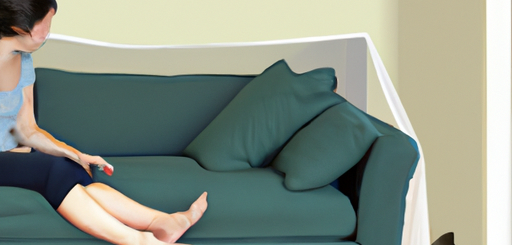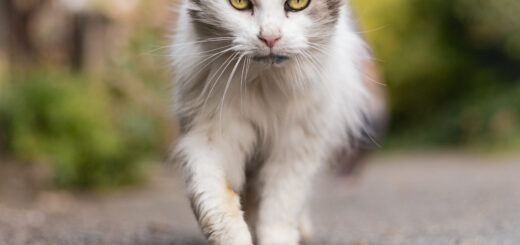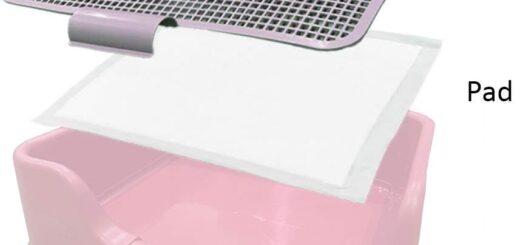Litter Box Solutions: Troubleshooting Litter Box Problems And Keeping Your Cat Happy
Are you having trouble with your cat using their litter box? Don’t worry, because in this article we’re going to talk about some common problems that cats can have with their litter boxes and how to solve them. We know how important it is to keep your furry friend happy, so let’s get started and find some solutions to make your cat’s litter box experience purrfect!
Common Litter Box Problems
Keeping your cat happy and healthy involves ensuring that their litter box experience is positive. However, there are several common litter box problems that can arise, causing frustration for both you and your cat. By understanding and addressing these issues, you can create a comfortable, stress-free environment for your feline friend.
Inappropriate Urination
Inappropriate urination is one of the most common problems cat owners face. If you notice your cat urinating outside the litter box, it’s important to address the issue promptly. There are a few possible causes for this behavior, including medical issues, litter box problems, and stress or anxiety.
Possible Medical Causes
If your cat suddenly starts urinating outside the litter box, it’s essential to rule out any medical conditions that may be causing the behavior. It could be a urinary tract infection, bladder stones, or even diabetes. If you suspect a medical issue, it’s crucial to consult with your veterinarian to get a proper diagnosis and treatment.
Litter Box Issues
Sometimes, the problem lies with the litter box itself. Cats can be picky about where they relieve themselves, and if they find the litter box unsuitable, they may choose alternative locations. Consider factors such as the size of the litter box, the height of the sides, and the type of litter used.
Stress or Anxiety
Cats are sensitive creatures, and they can experience stress or anxiety that can affect their litter box habits. Factors such as changes in the household, new pets, or even loud noises can lead to inappropriate urination. Providing a calm and secure environment for your cat and addressing any sources of stress can help alleviate these issues.
Litter Box Aversion
Litter box aversion occurs when a cat develops a negative association with their litter box. This can be due to various reasons, including an unpleasant litter texture, negative experiences, or even a strong smell associated with the litter box.
Unpleasant Litter Texture
Cats have their own preferences when it comes to litter texture. Some may dislike certain types of litter, such as those that are too coarse or scented. If your cat shows signs of litter aversion, it’s worth experimenting with different litters to find the one that your cat finds most comfortable.
Negative Association with Litter Box
If your cat has had a negative experience in their litter box, they may associate it with fear or discomfort. For example, if they were startled while using the litter box or if their litter box was recently moved to a new location, they may become averse to using it. To encourage your cat to use the litter box again, try creating positive associations by placing treats or toys near the litter box and giving them praise and rewards when they use it correctly.
Negative Experiences
Cats are creatures of habit, and negative experiences can deter them from using the litter box. If your cat has been startled or disturbed while using the litter box, they may start avoiding it altogether. It’s essential to create a safe and peaceful environment for your cat while they use the litter box and ensure that they can do so without feeling threatened or disturbed.
Overcrowded Litter Box
Having an overcrowded litter box can lead to problems, such as your cat refusing to use it. Cats prefer to have their own space for elimination, and when the litter box becomes crowded, they may opt to find an alternative spot.
Number of Litter Boxes
To avoid overcrowding, it’s recommended to provide one litter box per cat plus an additional one. For example, if you have two cats, you should have at least three litter boxes. This ensures that each cat has their own designated space and reduces the likelihood of territorial disputes or overcrowding.
Placement of Litter Boxes
The placement of litter boxes is also crucial. Cats prefer privacy while using the litter box, so it’s best to locate them in quiet and less-trafficked areas of your home. Additionally, ensure that the litter boxes are easily accessible to your cat, especially if they are older or have mobility issues.
Litter Box Location
The location of the litter box plays a significant role in your cat’s overall litter box experience. By considering a few factors, you can find the perfect spot for your cat’s litter box.
Quiet and Private Area
Cats like their privacy, so finding a quiet and secluded area for the litter box is essential. Avoid placing it in high-traffic areas or near loud appliances that may startle or disturb your cat while they are using it.
Easy Accessibility
Make sure the litter box is easily accessible for your cat. If they have to navigate through obstacles or climb stairs to reach it, they may be more likely to find alternative locations for elimination. If your cat is aging or has mobility issues, consider placing litter boxes on each floor of your home for their convenience.
Avoiding High-Traffic Areas
Putting the litter box in a high-traffic area can create stress and anxiety for your cat. They may feel vulnerable or intimidated while using it, leading to litter box aversion or inappropriate urination. Choose a location away from doorways or spaces where people frequently pass by to create a calm and safe environment for your cat.
Litter Box Cleanliness
Maintaining a clean litter box is essential to ensure your cat’s comfort and hygiene. Cats are naturally clean animals, and a dirty litter box can lead to litter box aversion and other behavioral issues.
Frequency of Cleaning
Regularly scooping and cleaning the litter box is vital. Aim to scoop it at least once a day and change the litter entirely every week or as needed. Cats are more likely to use a clean litter box, and a dirty one can deter them from doing so.
Type of Litter Used
The type of litter you choose can also impact your cat’s litter box experience. Some cats prefer certain textures or materials, so it may take some trial and error to find the right litter for your cat. Avoid drastically changing the litter without gradually introducing the new litter to avoid unnecessary stress.
Choosing the Right Litter Box
The size, type, and design of the litter box can also make a difference. Some cats prefer open litter boxes, while others prefer ones with a hood for privacy. Ensure that the litter box is large enough for your cat to comfortably move around and dig in. Additionally, consider using liners or mats to make cleaning easier and prevent litter from scattering around your home.

This image is property of images.pexels.com.
Solutions to Litter Box Problems
Now that we’ve explored the common litter box problems and their causes, it’s time to discuss possible solutions to these issues. By addressing medical problems, modifying the litter box setup, and creating a comfortable environment, you can help your cat overcome their litter box challenges and keep them happy.
Addressing Medical Issues
If you suspect that a medical condition may be causing litter box problems, it’s crucial to consult with a veterinarian. They can perform a thorough examination and run tests to determine if there are any underlying medical issues that need to be treated. Once the medical condition is addressed, your cat’s litter box habits should improve.
Modifying Litter Box Setup
Sometimes, a simple modification to the litter box setup can make a significant difference. Consider the following tips to ensure your cat’s litter box is enticing and comfortable:
Choosing the Right Litter
Experiment with different types of litter to find the one your cat prefers. Cats have individual preferences, so what works for one may not work for another. Try different textures, such as clumping or non-clumping, and unscented varieties to see which your cat prefers.
Providing Multiple Litter Boxes
Having multiple litter boxes can alleviate overcrowding and give each cat their own designated space. Make sure to place the litter boxes in different areas of your home, preferably in quiet and private locations. This way, each cat can have their own space to eliminate without feeling threatened or overwhelmed.
Using Litter Box Liners or Mats
Using liners or mats in the litter box can make cleaning easier and prevent litter from scattering around your home. Liners can be placed inside the litter box, making it easier to remove soiled litter. Mats placed outside the litter box can capture any excess litter on your cat’s paws as they leave, ensuring a cleaner environment.
Keeping Your Cat Happy
Creating a positive and comfortable environment for your cat is crucial for their overall well-being. By considering their physical and emotional needs, you can help eliminate stress and anxiety that may contribute to litter box problems.
Routine Play and Exercise
Regular play and exercise can help release your cat’s pent-up energy and provide mental stimulation, which is essential for their overall health. Interactive toys, scratching posts, and play sessions with you can keep your cat entertained and reduce their stress levels.
Providing Scratching Posts
Cats need to scratch to stretch their muscles and maintain healthy claws. Providing sturdy and appropriate scratching posts can redirect their scratching behavior away from your furniture. Place the scratching posts near areas where your cat spends the most time to encourage frequent use.
Creating a Comfortable Resting Area
Cats love to relax and nap, so creating comfortable resting areas can reduce stress and anxiety. Provide cozy beds or blankets in quiet and safe spaces, such as windowsills or cat trees. Having a designated spot for relaxation helps your cat feel secure and content.
In conclusion, addressing common litter box problems involves understanding the causes and implementing appropriate solutions. By considering your cat’s physical and emotional needs, providing a comfortable and clean litter box, and addressing any medical issues, you can promote positive litter box habits. With a little patience and understanding, you can ensure your cat’s litter box experience is a happy and stress-free one.

This image is property of images.pexels.com.









